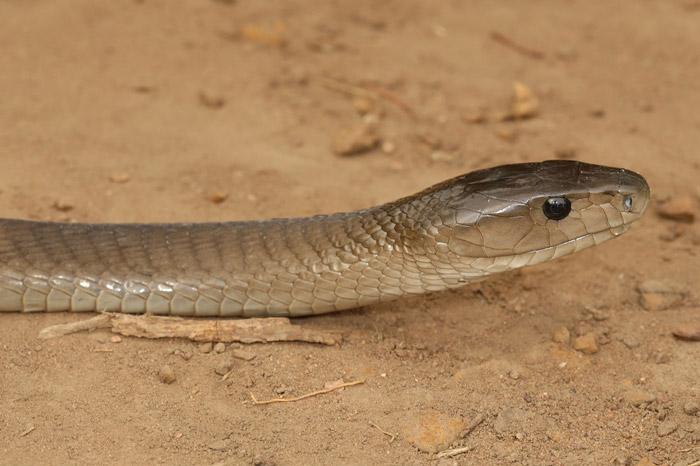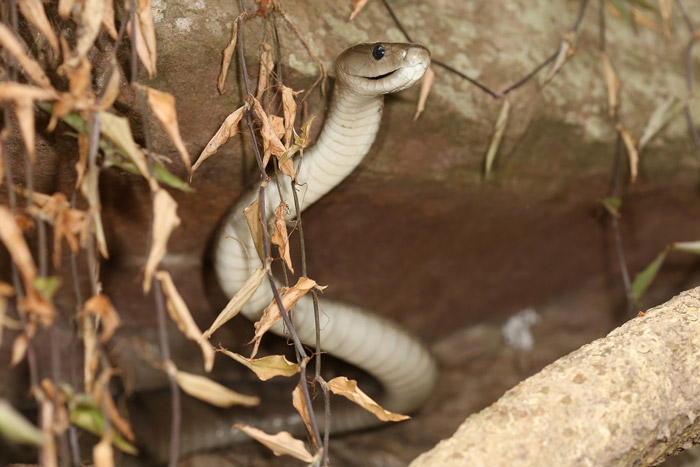The infamous black mamba is a snake with an unfortunately bad and arguably exaggerated reputation. It is the most feared snake in Africa and is known for being highly aggressive and thought to attack without hesitation. However, this is not quite true. Written by: Nick Evans

Black mambas are majestic animals that are incredibly strong and intelligent. They are alert snakes with a keen sense of sight. Also, they have a fast metabolism to digest prey quickly.
During the day, they actively hunt on the ground and in trees. They’re excellent climbers and often bask in the sun from the treetops in the morning. Their diet consists mainly of rodents and other small mammals, birds and reptiles.

The way that black mambas kill their prey is quick and efficient. They strike the animal, injecting it with their potent, fast-acting neurotoxic venom. They then wait and let the venom do its work. The bitten animal dies shortly after being envenomated. The mamba then starts working its jaws around the dead animal and swallows it whole.
Contrary to popular belief, black mambas are also not actually black. They usually have a grey or light brown colouration with a white underbelly, which turns a shade of black towards the tail. Their name comes from the inside of the mouth, which is pitch black.

Black mambas are not nearly as aggressive as they are made out to be. If disturbed, they tend to flee rather than fight. They are one of the world’s fastest-moving snakes, so they can disappear in seconds.
If threatened, they will raise their heads off the ground, spread their narrow hood, and gape at the threat, thus showing off the pitch-black inside of their mouth. This serves as a warning sign and can prove to be intimidating enough. Humans have this warning to be thankful for, as a bite can kill a human quicker than most other snake species.
Claims have been made that mambas can raise themselves high enough to stare at human eye level. While they can rise high up off the ground, possibly to chest height, this is a rare occurrence, and they usually disappear long before they need to take this line of defence.

If you ever encounter a black mamba in the wild, try to appreciate and enjoy the sighting. Admire its beauty and watch how it moves through the bushveld. There’s just no other snake quite like a black mamba.
To comment on this story: Login (or sign up) to our app here - it's a troll-free safe place 🙂.![]()








